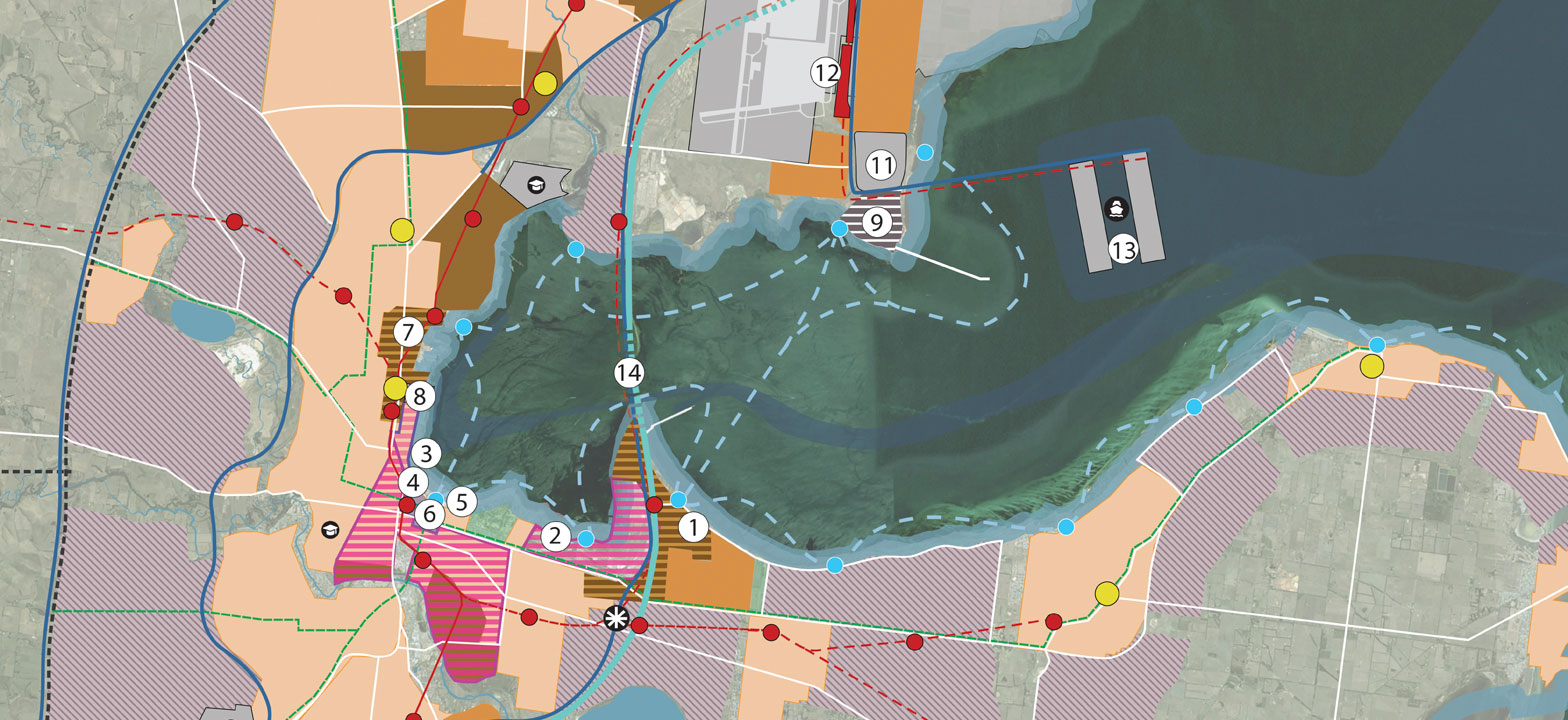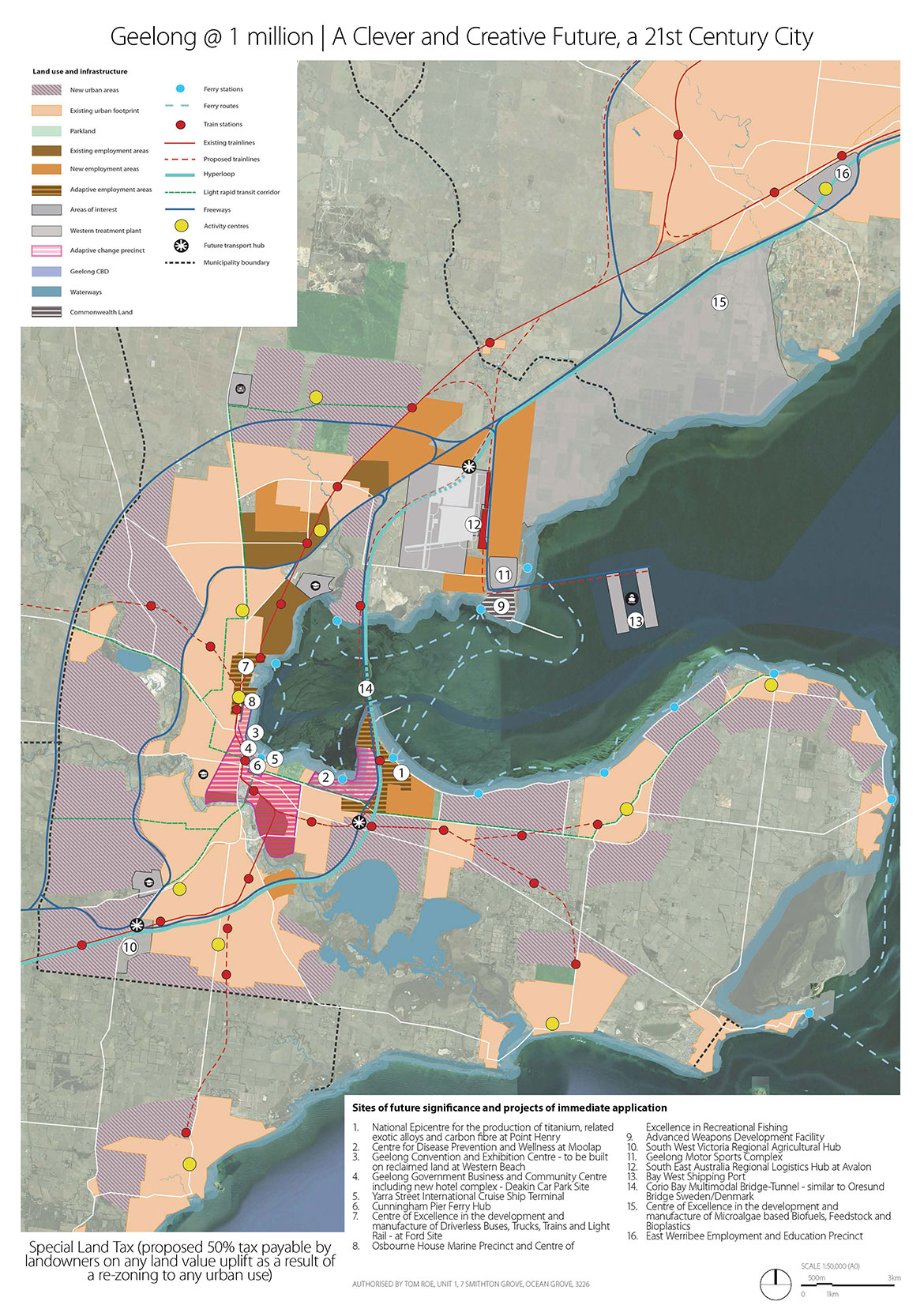The reality
I want us to start planning for the day when Geelong’s population reaches 1 million people.
In my view, this growth is inevitable so we need to start planning for it now. It is not going to happen overnight, but it is going to happen. Based on current growth predictions, Melbourne’s population is likely to grow by close to 3.5 million people over the next 35 years (to around 8 million people) and that city is going to look to regional Victoria to take part of the load.
The Geelong region, including the Bellarine, will be front and centre of that endeavour. Indeed, it is happening right now with all sides of politics talking to policy settings to encourage that very objective. In my view, a population of at least 1 million people in the Geelong region over the next 50-70 years is inevitable, and it may occur much sooner. It will bring economies of scale, new investment and opportunities, and it will bring challenges.
We need to start articulating a plan to not only control our destiny, realise our potential and lead our politicians with confidence, but also to place the necessary pressure on the State and Federal governments to build the infrastructure that the Geelong region will need to accommodate 1 million people.
We need that infrastructure delivery before the population growth – not after it. The last thing we need is to have Melbourne’s transport and infrastructure mistakes being replicated in Geelong and the Bellarine.
The Plan
My plan is predicated on a number of constraints.
I have required a new gateway entry to Geelong via Point Lillias and across to Point Henry utilising a bridge-tunnel concept to accommodate the shipping channel to Geelong Port, similar to the Oresund bridge tunnel linking Sweden and Denmark. Corio Bay and Point Henry would in effect become the new gateway into Geelong.
This bridge-tunnel would be multi-modal, accommodating road transport, cycling and a rail loop servicing an intra-Geelong metro rail network.
In addition to the intra-city/region rail system, I’ve also proposed a new fast rail service linking Geelong to Melbourne. For the purposes of this plan, I am proposing that the fast rail be based on the Hyperloop concept or the Japanese Maglev system.
The Fast Rail would eventually extend to Colac, Warrnambool and Portland, thereby opening up a large part of Western Victoria to further urbanisation, growth and employment opportunities.
The new conventional intra-rail loop would now be focused on servicing the needs of Greater Geelong rather than for inter-city commuter movements, and is proposed to extend to both Drysdale and Ocean Grove, as well as Torquay.
As a result of these infrastructure investments, and a focus on a north/south intra-metro rail system, northern Geelong would accelerate its evolution to being an aspirational place to live, with higher living densities, employment opportunities, housing gentrification and reinforcement of east/west links to the Corio Bay edge, bringing the water to the people. We have to make better use of, and easier access to, our stunning bay.
The plan also provides for a number of light rail services to service both existing and emerging communities. The current ring road has been extended to Point Henry, and this plan incorporates a new outer metropolitan ring road as a hard boundary to the city.
These ideas or concepts are not new (and a number have been recently in the public domain), but they were always good ideas, and in respect to the envisaged road infrastructure, are consistent with a VicRoads 2040 proposed road plan.
New intra-Geelong ferry services are also proposed, with a central hub situated at Cunningham Pier connecting the Bellarine and Avalon with the CBD.
I have also adopted Infrastructure Victoria’s “Point Wilson” option for Victoria’s new container port.
A number of dedicated large scale employment precincts have been proposed. There precincts would be in addition to the more traditional and complementary lower order employment areas in conventional residential/urban areas.
Where do we put 1 million people?
To accommodate 1 million people – and despite proposed increases in people densities in the inner Geelong city area – the urban footprint needs to pivot west, north and east into the Bellarine. Moreover, a pivot to the east will make much better utilisation of the proposed bridge-tunnel across Corio Bay.
This will be confronting for the Bellarine, but at the same time the load and extent of change is shared across the whole municipality, and there is, in my view, balance and logic to the plan.
To accommodate this growth, a great deal of new land will need to be re-zoned to permit further urbanisation of the region, including residential, employment, retail, recreational parkland, sporting complexes and other community facilities.
How do we pay for it?
An obvious consequence of the necessary re-zoning is that some land owners will have windfall gains. A critical part of my plan is that those windfall gains are taxed at a meaningful level, and that all the revenue raised through this tax is invested in infrastructure support and delivery for Greater Geelong.
Specifically, I propose that from this point forward, any land that is rezoned within the municipality, that directly results in a value uplift, will be subject to a Value Capture or Special Land Tax (VCT).
The level of the tax would be applied at 50% of the uplift attributed to the re-zoning (to be independently determined), and would be payable at the first liquidity (cash) event after a Development Plan (DP), Precinct Structure Plan (PSP) or similar has been approved by the responsible planning authority and which allows development consistent with the underlying new zoning.
It would in effect be like Melbourne’s GAIC, but would apply across the entire region/municipality, not just “growth areas”. Developers and/or land owners would still be subject to the usual developer contributions currently payable (in addition to the VCT if applicable), which are used to fund community infrastructure, roads, etc. within their respective projects.
Also, I propose that Council advocate to the Victorian State Government that a percentage (at a meaningful level to be agreed, but say 50%) of all collected property taxes in the region (specifically, property stamp duty and land tax) be set aside for shorter term infrastructure funding and special project support in the municipality.
This would provide Greater Geelong with a growth tax and a reliable source of asset funding outside that of standard Council rates. The usual annual State Government grants to Council would of course need to be reviewed in this context.
Notwithstanding my proposed tax arrangements, there would still be a requirement for considerable specific purpose grants from both the Victorian State Government and the Commonwealth to fund the big picture infrastructure such as intra rail, fast rail and the proposed bridge-tunnel – they would be beyond any local funding capacity and should be considered infrastructure of both state and national significance.
To deliver this plan and envisaged projects, I need your support and mandate. So Vote 1 Tom Roe as one of your three Councillors for the Bellarine.


















